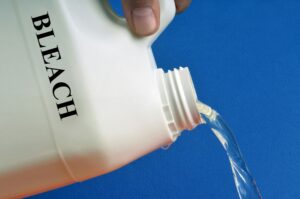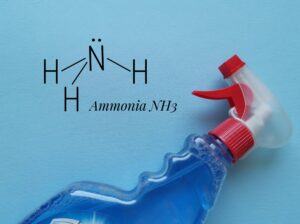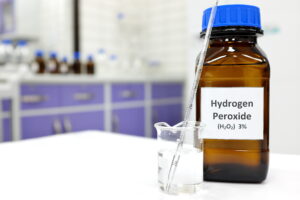Hot water and household cleaners are now more critical than ever to maintaining your family’s health. The dangers that can arise when cleaning our homes and workplaces must be recognized, especially in light of the increasing use of household cleaning products. So, do you know what cleaning products not to mix?
It can be tempting to combine various cleaning products to (theoretically) accelerate the completion of an enormous cleaning project. While it may seem paradoxical, there are several convincing reasons why you should avoid combining different cleansers on the same face.
Perhaps you’ve already dealt with a time-consuming and unpleasant housecleaning project. It’s possible that your pet has left a small gift or that vermin have made a mess in your cellar. For example, a specific location may neglect for far too long.
In some instances, it requires a thorough cleaning. In the case of time-consuming work, it is reasonable to feel the temptation to use every instrument at your disposal. However, this is also not unusual. Undoubtedly, having a more extensive product line results in better customer outcomes. Wrong.
Even if you already know this, you should never combine some popular household cleansers. Certain cleaners might produce chemicals when you use them together, and this could damage the environment. You should never mix household cleaners and chemicals in the first place.
What Cleaning Products Not To Mix
Many people believe that the fragrance of cleaning chemicals, disinfectants, and laundry detergents characterizes a clean home as being clean and fresh. Furniture polish and laundry detergent may evoke pleasant childhood memories. However, the powerful aromas emanating from these products are mainly dangerous to human health.
These products contain anything from phthalates and reproductive disruptors to allergens and other harmful substances. It is estimated that more than a hundred chemicals are emitted by air fresheners alone, endangering the health of up to one-fifth of the entire population of the United States. Aerosol sprays such as Lysol spread corrosives and respiratory irritants into the air, threatening human development, vision, and waterways.
Most commercial drain cleaners use sodium hydroxide, intended to burn organic debris, but instead eat through the supposed clean pipes. According to a paper published in the 2018 Canadian Medical Association Journal, researchers discovered that household cleaners include chemicals that can lead to childhood obesity if consumed by youngsters. Consumers purchase hazardous cleaning products despite being freely available in supermarkets and big-box retailers. The Environmental Protection Agency’s (EPA) guidelines are well-known for being lax, so consumers have limited options when buying “green” products.
EWG ratings, scientific studies, and other credible sources were consulted to compile this gallery of potentially toxic cleaning chemicals and their natural alternatives. Everything on this list is readily available and produces as little waste as possible. It is significant because you can never reuse or recycle many cleaning product containers. On the other hand, plastic waste cannot disintegrate once it reaches a landfill and is disposed of.
It is not recommended to mix cleaning products.
When using chemicals, you should handle cleaning agents with care. Combining two cleaning chemicals does not imply that the resulting product would perform better. Everything, on the other hand, is theoretically feasible.
Furthermore, combining certain products may jeopardize your health. When you mix bleach and vinegar with other chemicals, they can produce gases irritating to the respiratory, skin, and neurological systems, among other things. Some mixes can be fatal if consumed.
Always check the labels on your goods to ensure that you are not combining potentially dangerous components. To take it further, we recommend never using two or more cleaning products together.
Chemists are not normal individuals. When you combine different cleaners’ ingredients, it is hard to control the potential chemical reactions that may occur.
You should follow the manufacturer’s recommendations and use the proper cleaning solution instead for the work.
Ammonia and Bleach
If at all possible, keep ammonia and bleach apart.
Most households have at least one of these two cleaning solutions on hand. A single application of one of these products can eliminate bacteria and viruses. When you combine several chlorine gas forms, they can cause chest discomfort and even death if inhaled in large quantities.
For example, you should not store the ammonia-based Windex and the bleach-based Comet together because they are hazardous to one another, and you should separate them.
A year after the Swedish-German chemist Carl Wilhelm Scheele discovered chlorine in 1774, the first chlorine-based bleaches were made available to the general public in Europe. It was not until the 1820s that they identified the disinfectant and deodorizer. It has become widely used in domestic cleaning and sanitization procedures.
When used as a disinfectant and a cleaner, bleach can soon become toxic. Those who suffer from allergies or other respiratory disorders may be particularly sensitive to the aroma of bleach, which can cause severe respiratory problems. When you use bleach to pollute soil and water, the pH levels reach dangerous levels for plants and animals.
As an added precaution, the cleaning solution is corrosive, which might burn the skin or eat away at stainless steel or cloth. Bleach is rarely dangerous when used in properly ventilated spaces and minor quantities. Furthermore, excessive use of bleach (such as cleaning the bathroom daily), inhaling bleach fumes, mixing bleach with ammonia or vinegar, and dumping bleach down a drain or on the grass can all harm individuals and the environment.
Hydrogen Peroxide as an Alternative
A safe and non-toxic alternative is 3 percent hydrogen peroxide.
Since 1818, they have extensively used hydrogen peroxide as a disinfectant and bleach. Initial applications included the manufacture of headgear and the restoration and preservation of artwork. Combined with vinegar or on its own, household-strength hydrogen peroxide (3 percent concentration) is a powerful all-purpose cleaner. When used on glass, it can remove fingerprints and fingerprint stains. Clean floors, toilet bowls, bathtubs, showers, and worktops with one gallon of hot water and one cup of peroxide.
Bleach and Vinegar
Using bleach and vinegar at the same time is never a good idea.
In its most basic form, Vinegar is nothing more than an acetic acid solution based on an alcohol base (whether from beer, rice, or wine, among other products). Regarding vinegar, acetic acid is responsible for its characteristic flavor, smell, and capacity to kill microorganisms in food preparation. You can scent it with essential oils to make it more aromatic. The usage of vinegar for cleaning is not limited to the first five cleaning tasks listed above. You should keep these substances away from vinegar and never mix vinegar and bleach (the combination creates a toxic chlorine gas).
Chlorine gas may form by mixing bleach with vinegar, an acid, in the same way that ammonia and bleach produce. As an illustration of how deadly this mixture can be, consider that they used it throughout World War I, and it has the potential to inflict harm to your eyes, nose, and lungs.
Vinegar and Hydrogen Peroxide
It is dangerous to combine vinegar and hydrogen peroxide.
Since its discovery in 1818, they utilized hydrogen peroxide as a disinfectant and bleach, among other things. Initial applications included the manufacture of headgear and the restoration and preservation of paintings. You can use household-strength hydrogen peroxide (3 percent concentration), a powerful all-purpose cleaner, in conjunction with vinegar or on its own for maximum effectiveness. It can remove fingerprints and spots from glass surfaces, among other things. This solution is simple: clean floors and toilet bowls, bathtubs, showers, and worktops with one gallon of hot water and one cup of peroxide.
Combining these two chemicals can form peracetic acid, which can be harmful and caustic to many surfaces, including your skin.
Toilet bowl cleaners, for example, are among the toxic household cleaning products. Many well-known brands contain ingredients that cause eye and lung irritation (phosphoric acid, sulfates, etc.). They represent a significant environmental hazard because they are flushed down the toilet. Also, it can contaminate underground water supplies soils, and vegetation. In addition to cleaning products like these washing into rivers, toxic algal blooms can be triggered by excessive nutrients in the water.
Bleach and Rubbing Alcohol
Mixing bleach with rubbing alcohol is not recommended.
Bleach and rubbing alcohol can make chloroform and chloroacetone highly toxic. When used in conjunction with chloroacetone as tear gas, Chloroform has been reported to induce unconsciousness in individuals. According to the manufacturer, Lysol All Purpose Cleaner Spray and regular rubbing alcohol are other examples of two goods that you should never combine.
 Safety Best Practices
Safety Best Practices
When done correctly, the use of traditional and ecologically friendly cleaning chemicals is generally considered safe. Nevertheless, accidents do occur when these products are not handled properly.
According to the United States Department of Labor, cleaning and janitorial work are among the most hazardous vocations in the country. Several chemical-related mishaps occur each year, which contributes to this trend. Enviro-Solutions advises implementing a Cleaning Chemical Safety Program to limit the number of cleaning-related incidents.
Always read the labels on your cleaning goods before using them to guarantee your safety and your family.
Cleaning products are entirely safe if you carefully follow the manufacturer’s directions.
After cleaning any surfaces, thoroughly rinse them with hot water.
When we’re talking about cleaning products, it’s crucial to remember that many contain these ingredients; therefore, it’s essential to read the label before mixing any cleaning products. Combining two different drain cleaners or bleaches with another product, such as a toilet bowl cleaner, is never good. Once again, the combination might be hazardous, if not deadly, in some cases.
While we understand the desire to find the perfect cleaner, combining cleaning solutions is counterproductive. Follow the directions for using one at a time.
Coronavirus
Although this list is not exhaustive, please take the time to read more about the potentially detrimental effects of combining cleaning products and other chemicals. When eradicating bacteria and viruses such as the Coronavirus, the well-being of your family should be the most critical issue.
Because of the new coronavirus pandemic in 2019, more people are spraying, scrubbing, and washing their hands and surfaces than usual.
Although this cleaning has been beneficial, some unintended repercussions have been.
The number of calls to poison control centers for household cleaners and disinfectants such as bleach, nonalcohol disinfectants, and hand sanitizers has climbed by 20 percent in the last year. They made many calls regarding children under five accessing these things.
However, while cleaners and disinfectants can help rid our homes of hazardous bacteria, you must use them cautiously. This is most especially true in households with children. When using these items, it is possible to experience skin irritation, eyes, nose, and throat irritation. The presence of a trace amount of them can be harmful, regardless of how tiny the amount is.
Taking cleaning agents by mouth might result in confusion, nausea, vomiting, respiratory issues, and other symptoms.
The danger magnifies in the case of minors.
Call a professional cleaning services company for a safe and complex cleaning project!









